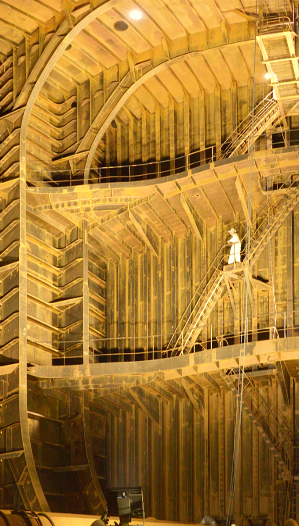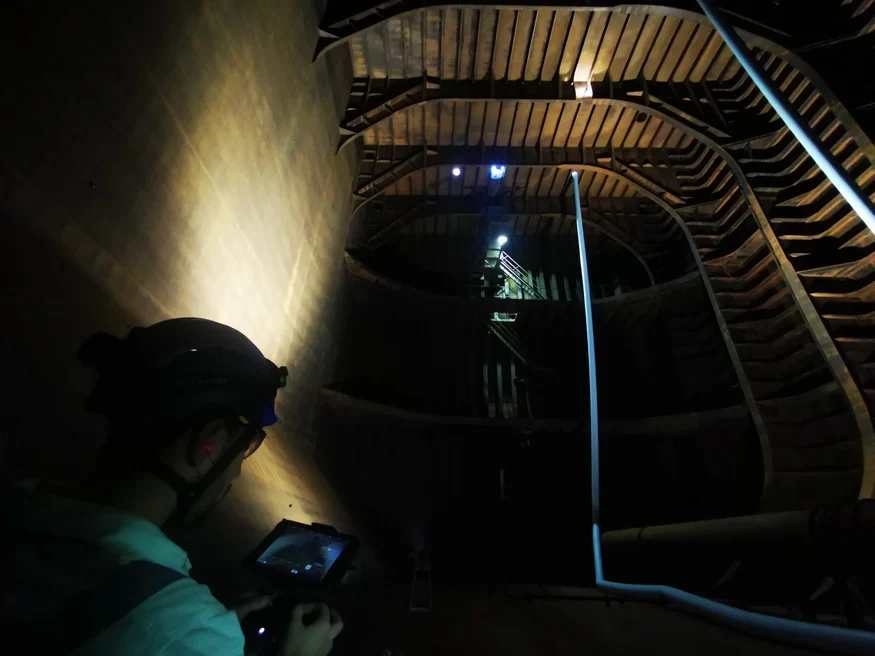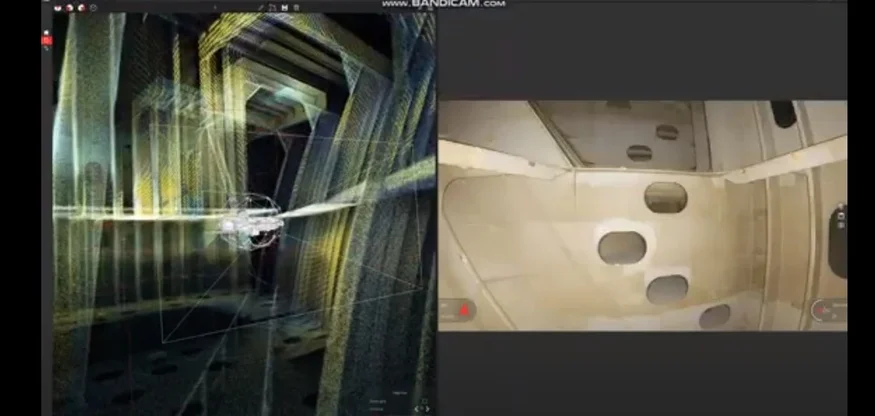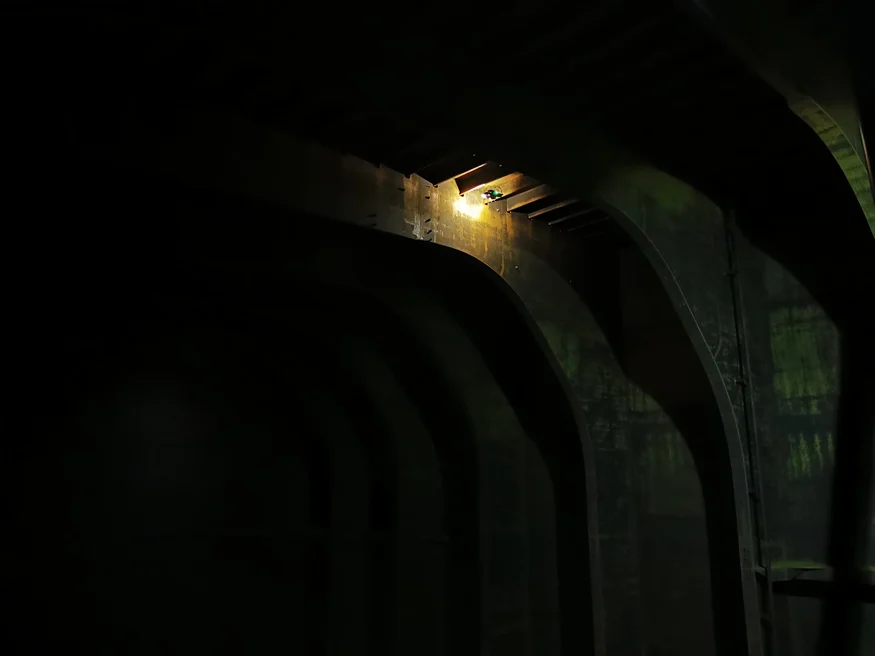Remote Hull inspection saves $1 million with the Elios 3
C-Bird used the Elios 3 for a hull inspection of a cargo ship, and achieved results that were safer, faster, and more efficient than ever before. Safety First: By using the Elios 3, C-Bird eliminated the need for scaffolding in the cargo tanks, avoiding around 10,000 hours of high-altitude work in confined spaces. This significantly reduced risks to personnel. Cost Savings: Replacing scaffolding with the Elios 3 saved approximately $1 million during the vessel survey, along with substantial time and logistical savings. Environmental Impact: Using a drone instead of rafting avoided large volumes of oil-contaminated water, which would otherwise require costly treatment and disposal. Improved Data Quality: The onboard LiDAR on the Elios 3 provided accurate data localization, making it easier to share findings with all stakeholders during the survey. The International Association of Classification Societies (IACS) Common Structural Rules (CSR) apply to over 90% of the world’s cargo vessels. These rules set strict standards for design, construction, and operation. Vessels must renew their class certification every five years, with a key part being the Hull Survey to assess structural integrity. Crude oil tankers have some of the most complex inspection requirements due to the difficulty of accessing critical areas inside the Cargo Oil Tanks (COT). Traditionally, this required either building scaffolding or filling the tanks with water—a process known as rafting. Both methods are expensive, risky, and environmentally harmful. The scale of a cargo tank is immense—scaffolding can rise tens of meters high, making detailed inspections extremely challenging. As vessels age, the cost and complexity of hull surveys increase. For ships over 15–20 years old, the cost of scaffolding alone can exceed $1 million, representing a significant portion of the overall project cost for class renewal. Erecting scaffolding introduces safety risks, including exposure to working at height in confined spaces. There's also the danger of foreign objects like scaffold tubes or tools being left behind, which could damage pumps or cause unplanned outages. Rafting, on the other hand, poses environmental challenges, especially with the disposal of contaminated water. A U.S.-based oil tanker fleet operator needed to conduct a No. 4 Special (20-year-old) periodical survey on one of its vessels. The 250-meter ship, classified by the American Bureau of Shipping (ABS), was undergoing dry docking in Southeast Asia for class renewal and other maintenance tasks. The operator had long been a champion of robotics in the marine industry and had been using C-Bird’s services for years. Their experience with the Elios 2 had already significantly reduced the need for scaffolding during class surveys. Now, they aimed to use the Elios 3 for a fully remote inspection, minimizing human entry into the hull while still gathering all necessary data. Initially, the team considered using an underwater ROV, but after evaluating the capabilities of the Elios 3, C-Bird concluded that a drone was the better choice for this specific task. C-Bird pilot Malcolm Connolly had previously used the Elios 2 for similar projects, but for this mission, he opted for the new Elios 3. He wanted to take advantage of the LiDAR live map to navigate areas where visibility was limited, and he also tested the new UT payload for ultrasonic thickness measurements. Malcolm guides the drone through the empty space during the hull inspection. The Elios 3 was flown into the cargo tanks without any personnel entering the space. Malcolm navigated the entire hull, capturing 4K video footage and a simultaneous 3D LiDAR scan. The collected data was then processed in Inspector 4, providing a full 3D reconstruction of the area and clear visual evidence of any anomalies. The Elios 3 combines LiDAR data with real-time video during the inspection. The Elios 3’s 3D Live Map allowed the C-Bird team to ensure complete coverage of the inspection area from the safety of the ship’s deck. This eliminated the need for confined space entry, reduced the risk of dropped objects, and minimized manual handling and crew support. It also cut down on setup time for each tank, improving overall efficiency. Malcolm Connolly, CEO of C-Bird, said, “The 3D laser scan from the Elios 3 allows for precise data localization. This brings us closer to true risk-based asset management and automation. Being able to repeat surveys accurately and measure changes over time opens up possibilities for machine learning to predict maintenance needs. That’s exactly where the marine industry is heading.†He emphasized several benefits of the Elios 3, including: Thanks to the Elios 3, C-Bird completed a safer, faster, and more efficient hull inspection. By avoiding scaffolding, they saved over 10,000 hours of high-altitude work. C-Bird and their client both appreciated the simplified logistics and the environmental benefits of not needing to fill the tanks with water for rafting. They also recognized the drone’s potential as a viable alternative to underwater ROVs for hull inspections. The Elios 3’s 3D mapping provided inspectors with the accurate data needed for class renewal, enabling them to identify key points of interest. This contributed to the successful reclassification of the vessel. This case study highlights how advancements in drone technology are transforming the maritime industry, offering safer, more efficient, and more sustainable solutions for critical inspections. As drones continue to evolve, their role in asset management and maintenance will only grow. Plastic Hollow Floatation Ball Plastic Hollow Floatation Ball,Plastic Hollow Float,Floating Filter Balls,Pp Hollow Ball Wuxi Qijing Machinery Technology Co., Ltd. , https://www.sinombbrmedia.comRemote Hull Inspection Saves $1 Million With The Elios 3
Key Benefits at a Glance

Seeking a Safer and More Efficient Inspection Method
Inspecting the Ship’s Hull with the Elios 3 Drone


How the Elios 3 Enhances Hull Inspections in the Maritime Sector

Transforming Hull Inspections with Drone Technology
